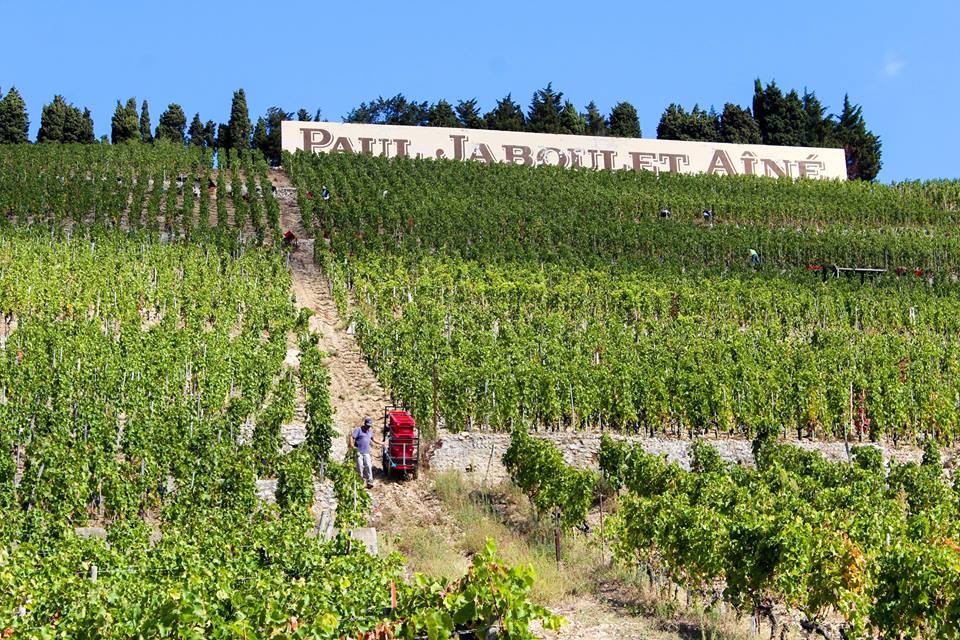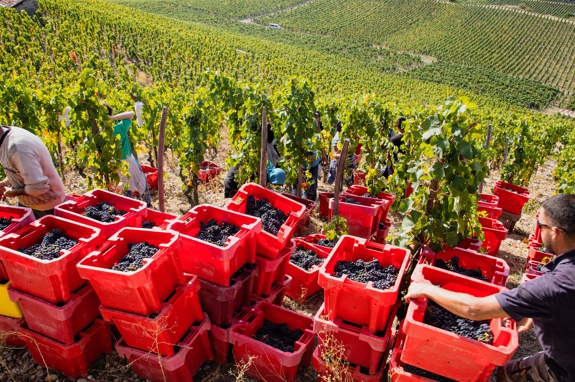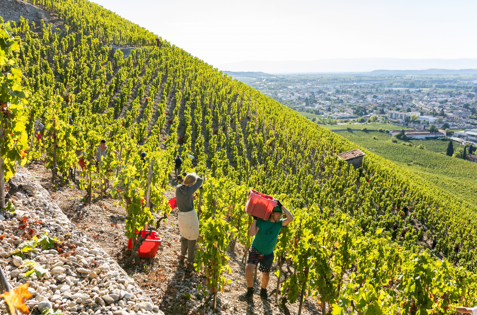2020 官网升级中!现在您访问官网的浏览器设备分辨率宽度低于1280px请使用高分辨率宽度访问。
Sustainability has been the subject of WINWSA’s annual award since its inception and we have witnessed the W&S industry’s warm response to this topic. More and more wineries, brands, and even consumers started to pay attention and get involved. It is one of the major transformations in the industry these years. Sustainability is nothing new in the wine business. Viticulturists, wineries, and businesses have ventured into these fields decades ago.
Against this backdrop, “WINWSA Global Voice” has invited global leaders, scholars, and researchers to discuss the future trends of this subject, the impact of extreme weather on viticulture, and how to achieve sustainable development in the wine business.
Caroline Frey is a representative of cutting-edge French winemakers, she is the winemaker and owner of Chateau La Lagune, Paul Jaboulet Aine and Chateau de Cordon-Andre, as well as a private wine project in Switzerland. She instituted biodynamic practices, creating biodiversity refuge in the Rhone and in Bordeaux. She was also the Honorary Advisor of WINWSA 2021.
 © Caroline Frey
© Caroline Frey
The content below is a simplified summary of the video. To watch the full video please go to WINWSA’s public WeChat account.
01 Good functioning of the soil
We have never had as many exceptional vintages as in the last 15 years. The vine, when it is planted on soils that are suitable and well maintained, is one of the most resilient plants in the face of climate change. Meanwhile, droughts are quite long these last years, and it is certainly one of our biggest challenges. For our part, we really think that the solution to these rather prolonged droughts comes from the good functioning of the soil, in particular through biodynamics.
We have worked a lot on this fraction of humus, which worked like a bit like sponge, which is able to retain water and restore it when the vine needs it. We have worked on the respect of this microbial life of the soils which also contributes to all this balance and to this good functioning. We have learned to work with our natural grass coverings or those put in place on certain plots of land, because in periods of drought, they can create a real mulch that will help reserve humidity and avoid the increase in temperature in the first centimeters of the soil, which can hinder its proper functioning.
 © Caroline Frey
© Caroline Frey
02 Intervene as little as possible
We must always consider the grape variety – terroir – climate together. The grape varieties and terroirs of Bordeaux would not suit the Rhone climate very well and the opposite would probably not work very well either. In my opinion, these are two regions that are impacted in a rather similar way with regard to these periods of drought, of heat where the soil and the earth really need to take over. It is the same for the episodes of hail and frost, the two regions are impacted in the same way. In the Rhone Valley, the vines are more dispersed, unlike in La Lagune. The impact will therefore be minor.
 © Caroline Frey
© Caroline Frey
Each region has its strengths and difficulties, but different situations must be managed. When we see in 2022, the Hermitage hillside with its magnificent foliage, the Méal slope in full health with beautiful bunches of grapes giving a superb harvest and a quality of wine never seen before. During these periods of drought, for example, we try to intervene as little as possible on the plant. The vine is already stressed enough. We will leave it alone and avoid additional stress. We do not touch the foliage and we let it manage.
03 Philosophy of biodiversity
Biodiversity, whether it is the fauna, the flora of the soil, of the subsoil, will contribute in a very important way to the good functioning, the health and the general balance of the plant. This is due to the countless interactions that can exist in the living world. We think, for example, of mycorrhizae. This is a subterranean network that belongs to the family of fungi. A network of absolutely infinite filaments that establishes a kind of mutual food support between plants. They are very fragile, so we must be very careful, when we are lucky enough to have them, not to destroy them by working the soil in the wrong way, for example. There is a real interaction that can be very favorable to the nutrition of the vine, especially during stressful periods.
 © Caroline Frey
© Caroline Frey
The idea of this biodiversity, of this global balance in which the vine can blossom and grow, is really to give it this natural strength and resistance to be in better health and to better resist diseases, mildew, oidium, and to these stressful climatic episodes. Let it be healthy, a bit like us, so as not to catch the slightest microbe that passes by.
· E N D ·